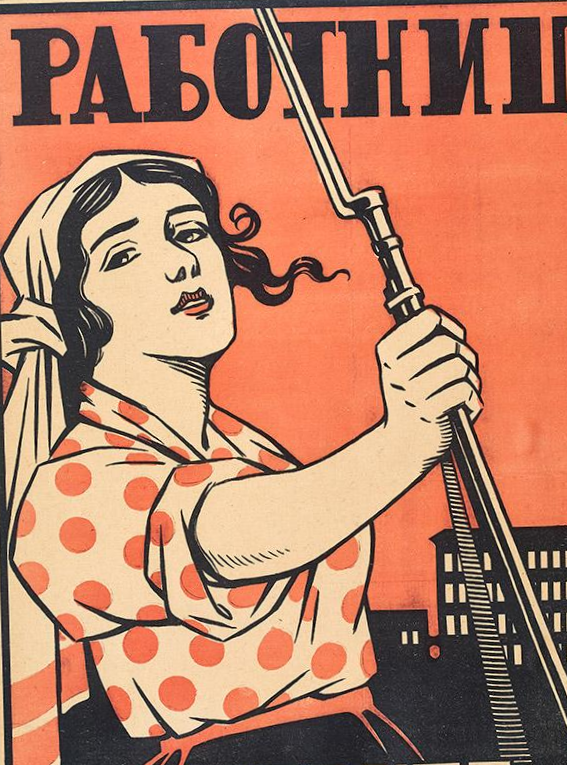The devastating problem of gender violence has been very real and overwhelming for the women of Mexico for a long time now. But in the face of this violence, solidarity has become all the stronger. While there has been protest in the past, resistance to this vile situation is on its way to coming out in full force. The feminist movement in Mexico seethes with rage at the injustice that has been allowed to continue almostunabated by the government, despite their promises to wield their power to deal with the matter.
While protests against this situation have been a regular occurrence for decades now, the current revolt can be said to have had its beginnings back in 2016, in what was termed by protesters as their 'violet spring'. Those who kickstarted these actions sent out a rallying cry to women across Mexico to join in their fight back against the aggression they suffer, especially as young women, exemplified in what is called the ‘machista’ (male chauvinist) culture throughout the country. They voiced their condemnation of the abuse they suffered, as well as bringing attention to the explicit violence and oppression.Social re-education was demanded to stamp out these very common acts from men.
Tens of thousands of women took to the streets, with the protests being particularly concentrated in Mexico City. The march was protected by women wearing balaclavas and badges calling themselves “feminist security”. They would stay ahead of the main bulk of the march and make sure the streets could be easily traversed by them, setting up roadblocks, while the full force behind kept up their chants and bore crosses with the names of murder victims on them.
At the time, official data from the federal government showed that over 60% of Mexican women over the age of 15 had been victims of some kind of abuse, whether it be verbal, physical or economical. It also showed that there were over 44,000 cases of femicide in the previous three decades. Over the course of last year, just three years on from this original protest, data shows that 3,825 women were victims of femicide, with an average of 10 murders a day. Aside from the highly disturbing and harrowing nature of it, this sharp increase in yearly occurrences was made even more infuriating by the fact that the current government, headed by the president Andrés Manuel López Obrador, known as Amlo, had promised widespread social change and to put the poor and most marginalised of society first before being elected in 2018, which significantly helped his campaign and earned him the vote of most of the protesters today.
Despite identifying as a progressive social democratwith his party National Regeneration Movement, known as MORENA, supposedly reflecting this, his actions since taking office, as well as his response to these protests while being in power, have told a different tale. Aside from his significant lack of action, he has denounced much of the protest and severely downplayed the issue they have raised, claiming back in May this year that "90% of the calls made by women about domestic violence are false", lumping them in with calls made about sabotage and bomb threats to the Mexico City metro system, which he claims are also 90% false. He made this statement in response to questions put to him about the rise in abuse towards women over the course of the Coronavirus pandemic, which has definitely been the case, becoming another alarming effect of the virus. He does not deny that oppression and violence towards women is happening and is a problem, but he also asserts that its existence is because of the "neoliberal policies" of past governments. On top of this, almost all criticism over the issue, and others, he attributes only to "conservatives" that, according to him, are spreading falsehoods about his government in a plot against him, and are trying to shift the blame.
At the beginning of August last year, a new wave of protests sparked in response to the rape of a teenage girl by four police officers in Azcapotzalco. This time dubbed the 'glitter revolution', these two huge protests were years apart, but the reasons were still very much the same, with the participants stating that women were going missing, being raped and murdered, and almost all of these crimes were going unpunished with no one even charged. There was especially hope in Mexico City following the election, as the city boasted its first elected female mayor, Claudia Sheinbaum. However, these expectations were ultimately unfounded, as Amlo has built alliances with uncompromising evangelical politicians and womens' shelters have seen their funding cut, amongst the wave of other cuts to social programs.
Protests have reoccurred since, usually again brought on by a new odious circumstance. On February 14th, Valentine's Day, there was a fierce protest outside the presidential palace over the killing of 25-year-old Ingrid Escamilla, though this was just another in a long string of femicides. Particularly disturbing, though, was that explicit photos of her mutilated corpse were published in the media, accompanied with words that were close to, if not were, trivialising the murder. Amlo was inside the palace at the time as the protesters raged outside, who spray-painted the building with declarations of their anger, and also lit the ejecting spray to produce fire as emphasis. Amlo again condemned the violence the women suffered, but also again refuted claims that his government showed no true commitment to eradicating the problem. Protestors also called out the press for their beingcomplicit in it all.
The following month, on March 9th, there came one of the biggest actions we have seen in the course of this whole movement; a monumental women's strike across the country, named a 'Day without Women' by its organisers. Mexico City saw the largest abstention from working women, with barely a woman in sight throughout the whole city, and thousands upon thousands more also choosing to stay at home in dissent. It followed a march the day before, on International Womens' Day, that saw the biggest turnout of any of the marches, with at least 80,000 in attendance. While some businesses allowed women to join the strike, many women chose not to participate for fear of having wages reduced. Some who did attend felt that those businesses that chose to support the strike by allowing their employees to take part, as well as the major politicians who expressed their support, ultimately weakened the impact of the action.
Later on in this year, in August, another protest happened in response to a surge in violence and rape perpetrated by the police, after the their numbers were expanded by 50% in Mexico City and 3,000 National Guardsmen were deployed across the city. The police have been known to be culprits of many of these acts for a long time, but the increase in occurrences triggered the fury of protesters all the more so. The police are even known to conspire with trafficking networks, on top of this. While talking to the press, the Security Secretary Jesús Orta was covered in pink glitter by protesters, which was immediately condemned by the government, including Claudia Sheinbaum, who claimed the demonstrations were an attempt to goad her into using force against the protesters themselves. Her statement further incensed them, leading to another state-wide protest on August 16th, in which they broke the windows of windows and graffitied the Metrobus station, a police station and the Independence Monument in Mexico City. The media focused on these actions, instead of the violence they brought light to. Sheinbaum made efforts to pacify them by meeting with a group of hand-picked supposed feminists, many of whom support the government, as well as TERFs, out of the sight of the public. She made promises to instigate workshops focused on gender violence, and also erase the charges against protestors, while any commitment to punishing the police responsible was notably completely absent.
Last month, an occupation of the National Human Rights Commission (CNDH) in Mexico City was staged and began. The building serves as the offices for the federal institution, which keeps track of and inspects human rights violations, as authorised by the UN. On September 2nd, a small but impactful action set a chain of events in motion that led to this, in the form of a brave individual called Marcela Alemán tying the shoelaces of the shoes she wore to a chair inside the building, and refusing to leave. She did this because the staff inside, once again, told her to make up and file another report against the people who had sexually abused her daughter back in 2017. Understandably angry at yet another such request, she filmed a video of herself on her phone explaining what had just happened to her, and declaring her resolve to not leave the building until she received justice forthe heinous crime, which she then posted online. Within hours, young women displayed their solidarity by going to the building to form a human shield at its doors, against any police that were anticipated to come and remove her. Some of the women were from anarchist collectives, and under their guidance, the following day they assailed the building, ejecting the workers and claiming it for their own.
With it in their grasp, they tore down pictures of famous male figures from history, defaced them with graffiti resembling make-up, placed these outside as part of their barricade, and decorated the walls inside with feminist and anti-police messages. They then declared it now to be a shelter for victims of violence towards their gender. Every day since, they have given speeches to and otherwise communicated with the media, highlighting the aggression they suffer, as well as the government’s poor response to it. Many of the women involved in the action and their supporters have taken a much more anti-capitalist stance, blaming the ideology still very present in the country as well as the state itself. They drew attention to and blamed the fact that the capitalist system, and its inherently patriarchal nature, leads to very poor working and living conditions for women in the country, including some having to travel to work in the early hours of the day and return late at night in order to support themselves, which means they are forced to commutein even more dangerous circumstances. Inspired by their example, on September 10th, more groups of women gave the human rights offices in Ecatepec the same treatment, occupying the building, while more protests were held outside offices in the states of Michoacán, Veracruz, Aguascalientes, and Puebla, the latter being known as a particular hotbed of gender violence. There was a savage crackdown by the police in the Ecatepec offices just after midnight of the day they were occupied, with many of the women arrested and taken away in unmarked vehicles.
The latest great action happened on September 15th, Mexico's Independence Day, in what was termed an 'anti-grita', alluding to the patriarchal nature of the systemand serving to bring attention to the subject during the nationalist themes of the day. "El Grito de Delores" (the Shout of Dolores) was a famous act by a Mexican priest back in 1810, who lived in a small town called Guanjuato and commanded that the bells of the church be rung in an attempt to provoke the people of Mexico to rise up and fight for their independence from the Spanish Empire. It achieved its aim, and it is now seen as the event that set in motion the Mexican War of Independence. In celebration of this historic day, it is reenacted every year by whoever is the president of Mexico at the time in the Zócalo of Mexico City, its main square. The anti-grita spurred action and saw support across the country, resulting in a resounding cry of solidarity with the women who held theoccupations of the offices, and with the plight of women in the nation as a whole.
While it can be said that women's rights have somewhat improved in recent years – examples being city-wide alerts to warn of occurring violence, the decriminalisationof abortion in the state of Oaxaca, and the recognition of femicide as a specific type of crime – these are only drops in the ocean, and there is still much, much more that needs to be done. Women's collectives have seen a huge increase in their participants over the past year, with the support and funds going on to contribute to more than 100 organisations. Covid-19 has added a lot more difficulties to the movement, yet they still push on, their tenacity plain for all to see. The government has shown no sign that they will halt their denial of their part in effectively allowing the abuse to continue. Many who take part in the protests have declared that their salvation will not come from the state, but rather from their own resolve and means.
Special thanks to our patrons, John Walker, BoringAsian, Mr Jake P Walker, Joseph Sharples, Josh Stead, Dave, Bliss, Hol, Aryeh Calvin, Rylee Lawson, Meghan Morales
If you want to help us maintain and develop our publication please consider becoming a patron:





